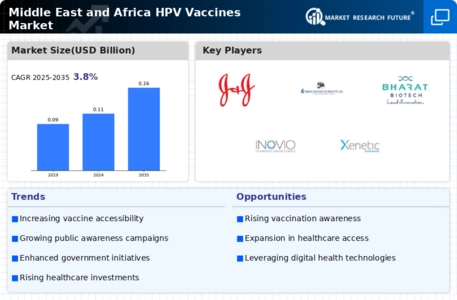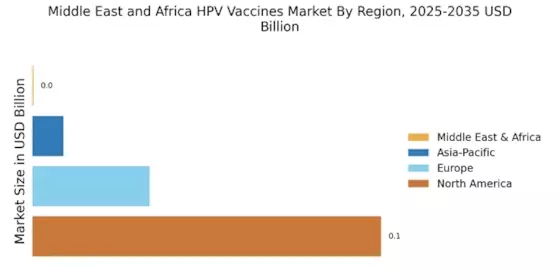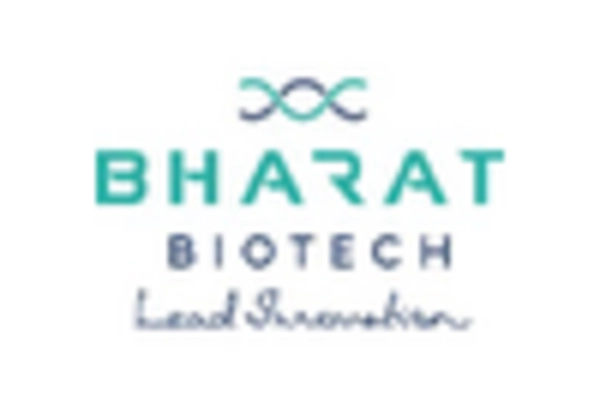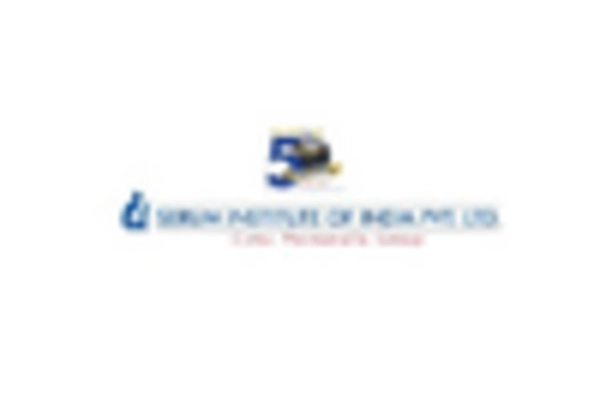Emerging Vaccine Technologies
The development of emerging vaccine technologies is poised to transform the Middle East and Africa HPV Vaccines Market. Innovations such as needle-free delivery systems and improved vaccine formulations are being explored to enhance vaccine efficacy and patient compliance. These advancements may lead to more effective vaccination strategies, particularly in regions with logistical challenges. As new technologies are introduced, they could potentially increase the appeal of HPV vaccination among populations that may have previously been hesitant. The integration of these technologies into existing vaccination programs may result in higher coverage rates, thereby positively impacting the market.
Government Initiatives and Funding
Government initiatives aimed at combating HPV-related diseases are pivotal in shaping the Middle East and Africa HPV Vaccines Market. Many countries in the region have launched national vaccination programs, often supported by international health organizations. For instance, several governments have allocated substantial budgets to facilitate the distribution of HPV vaccines, particularly in underserved areas. This financial backing not only enhances vaccine accessibility but also fosters public trust in vaccination efforts. The commitment of governments to improve public health outcomes is likely to drive market growth. As funding increases, the capacity to reach more individuals with HPV vaccines expands, potentially leading to higher vaccination rates and a healthier population in the region.
Increased Public Awareness Campaigns
Public awareness campaigns regarding the benefits of HPV vaccination are gaining momentum in the Middle East and Africa HPV Vaccines Market. Health organizations and NGOs are actively working to educate communities about the risks associated with HPV and the effectiveness of vaccines in preventing related cancers. These campaigns often utilize various media platforms to reach diverse audiences, thereby enhancing understanding and acceptance of vaccination. As awareness increases, it is anticipated that more individuals will seek vaccination, contributing to market growth. The success of these initiatives is reflected in rising vaccination rates in several countries, indicating a positive trend for the Middle East and Africa HPV Vaccines Market.
Partnerships with Healthcare Providers
Collaborations between governments, NGOs, and healthcare providers are instrumental in advancing the Middle East and Africa HPV Vaccines Market. These partnerships facilitate the implementation of vaccination programs, ensuring that vaccines are available in both urban and rural settings. By leveraging the expertise of healthcare professionals, these initiatives can effectively address community concerns and misconceptions about HPV vaccination. Furthermore, healthcare providers play a crucial role in recommending vaccines to patients, which can significantly influence vaccination uptake. As these partnerships strengthen, the distribution and administration of HPV vaccines are likely to improve, thereby enhancing the overall market landscape.
Rising Incidence of HPV-Related Cancers
The increasing incidence of HPV-related cancers, particularly cervical cancer, is a critical driver for the Middle East and Africa HPV Vaccines Market. According to the World Health Organization, cervical cancer remains a leading cause of cancer-related deaths among women in many African countries. This alarming statistic has prompted health authorities to prioritize vaccination programs. The prevalence of HPV infections, which can lead to various cancers, underscores the urgent need for effective preventive measures. As awareness of these health risks grows, governments and health organizations are likely to invest more in HPV vaccination initiatives, thereby expanding the market. The potential for reducing cancer rates through vaccination is a compelling argument for stakeholders in the Middle East and Africa HPV Vaccines Market.


















Leave a Comment